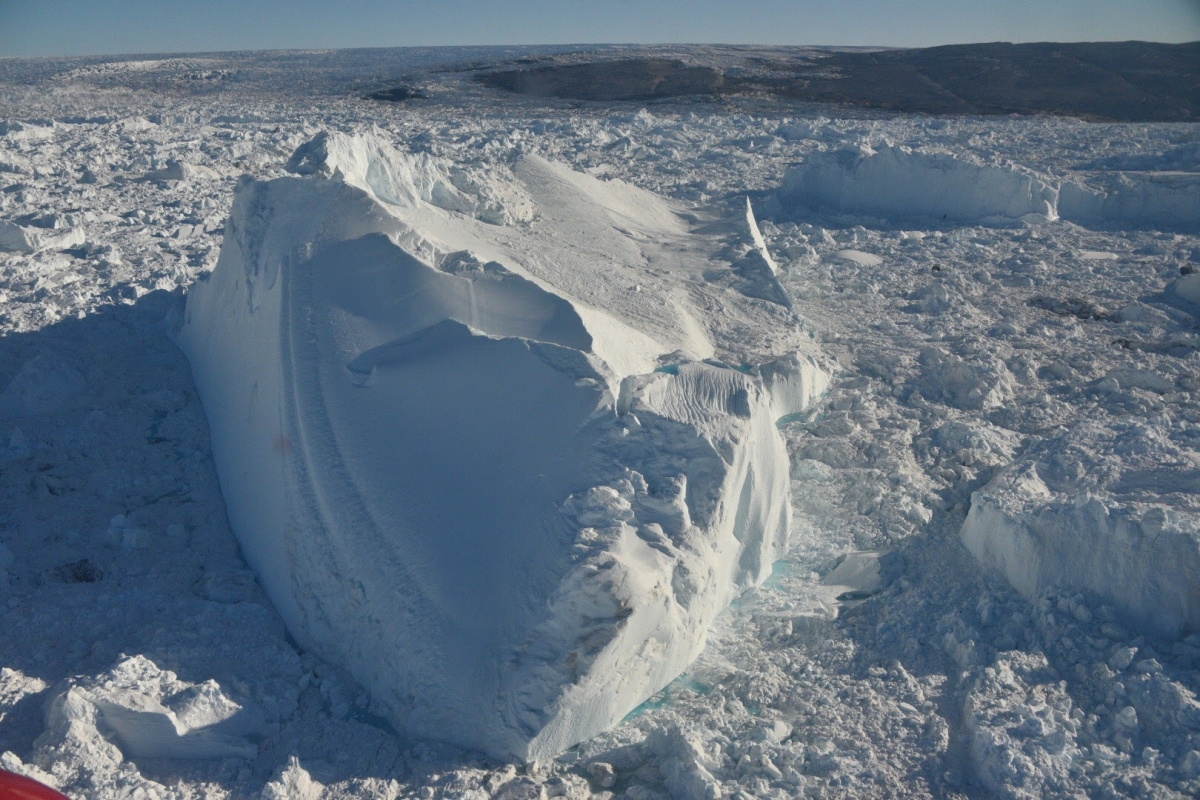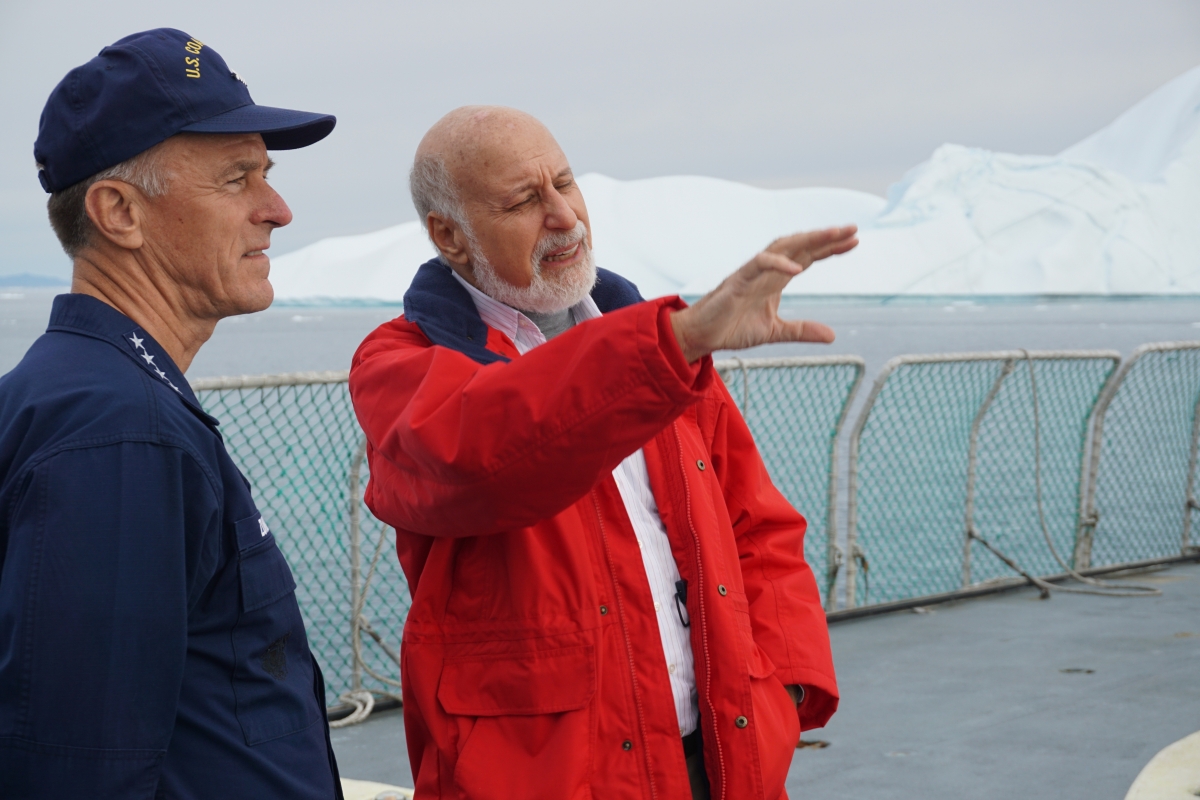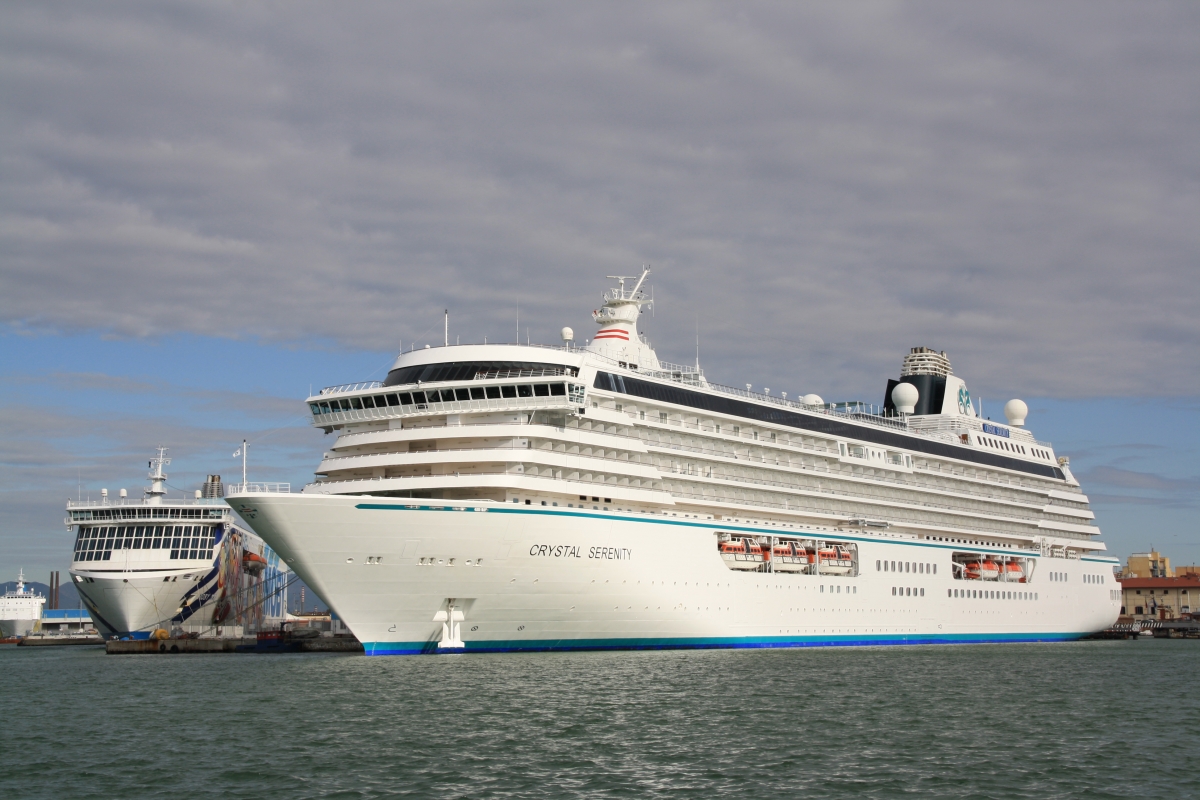Titanic Disasters Ahead? – Part 2 of Report from Greenland
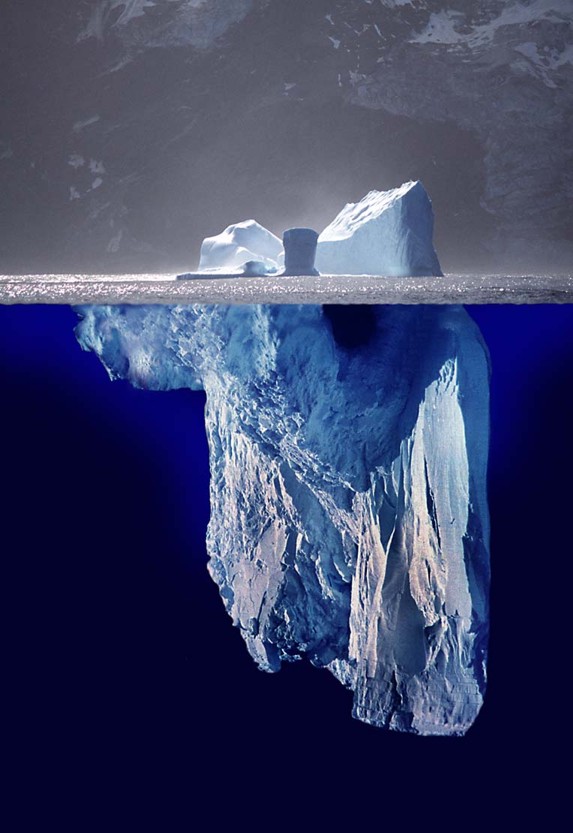
As the Arctic Ocean and glaciers in the region melt ever-faster, paradoxically, there is a growing problem, mostly unrecognized. On the one hand, there is tremendous economic opportunity as the floating ice sheet around the North Pole shrinks to record levels. Sea ways are opening that have been frozen solid for millennia. Ship traffic is on the verge of exploding, including commercial ships of all types and sizes, and now tourism on a larger scale.
On the other hand, there is hidden danger, as this floating ice breaks into huge blocks — and the glaciers on Greenland and Alaska melt, spawning more icebergs, creating potential shipping disasters of titanic proportions.
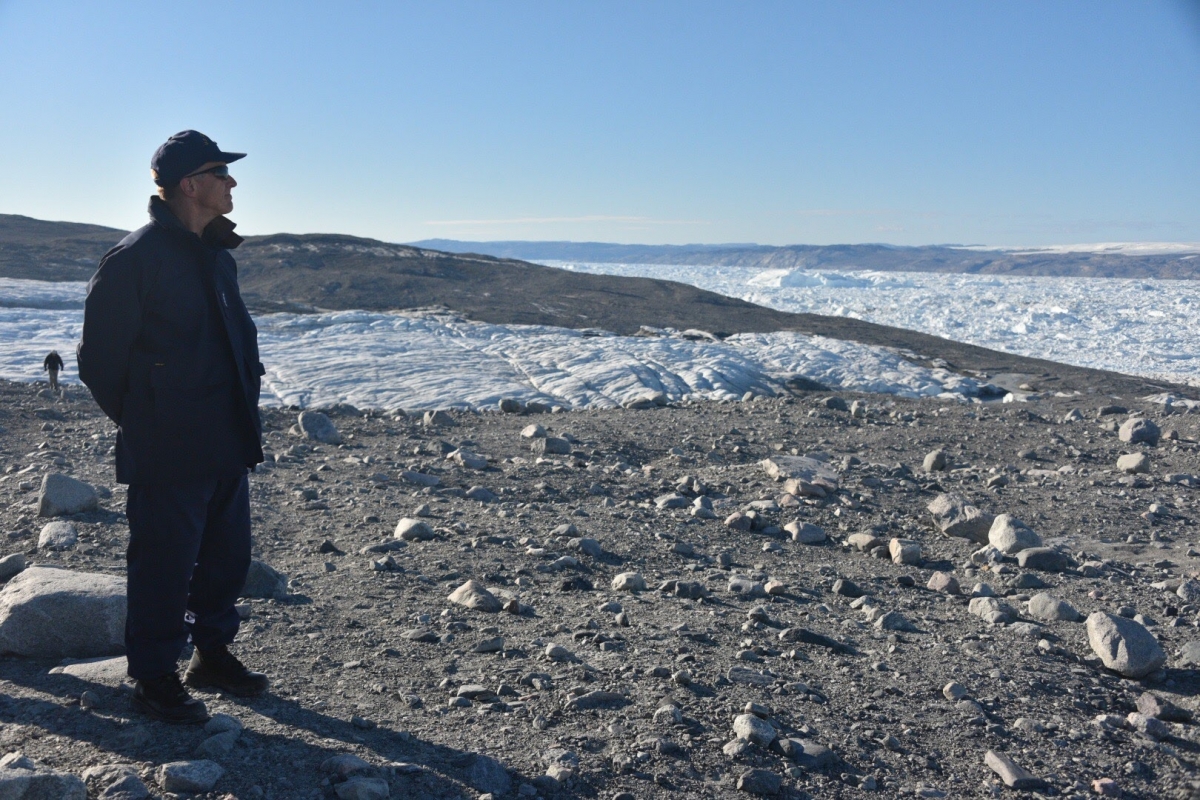
Last Monday it was impossible to miss the problem as I stood with Admiral Paul Zukunft, Commandant of the US Coast Guard, on Greenland’s Jacobshavn Glacier (“Yak-OBS-hav-en”), the one most likely to have spawned the iceberg that sank the RMS Titanic in 1912. We were there accompanying Senator Angus King (Maine).
The next day, aboard “Thetis” a three hundred foot plus vessel belonging to the Joint Arctic Command – the combined Danish military and coast guard force on Greenland we toured the icebergs.
Thetis is built for ice, an ice-strengthened ship, and was easily able to fend off the small bergs as we carefully worked our way out of Ilulissat Harbor (“ill-LEW-liss-at”) to see the giant icebergs that have such an eerie beauty and deadly potential.
Besides Titanic, another ship was often a topic of discussion, the cruise ship Crystal Serenity. It had just departed Alaska on its maiden voyage through the Northwest Passage, scheduled to stop in Greenland before its destination in New York City on September 16. The cruise company and the Canadian government point out that the ship will have an escort ship for safety reasons.
However, the Crystal Serenity was not built as an ice-strengthened ship. Even with possible ship strengthening modifications, I am concerned as standard cruise ships like this one turn the Arctic into large-scale tourism. It is a recipe for disaster though there is obvious consumer demand. With prices ranging from $20,000 up to $120,000 per cabin and a capacity of 1,600 passengers, each cruise is worth tens of millions of dollars.
As a comparison, the accident history of cruise ships near the South Pole should give us pause. In recent decades at least three cruise ships have been sunk in Antarctica illustrating that risks remain even with the most modern construction, iceberg surveillance, and navigation equipment.
One case from Antarctica illustrates the problem. In 1989 the cruise ship Bahia Paraiso was in communication with Palmer Station, a research base in Antarctica. The scientists warned the captain not to come in to the bay. He ignored their advice, assuring them he was experienced in the area. The ship did get in unharmed. However, when it tried to get out of the bay, just an hour or so later, the icebergs had shifted position. The ship struck one and sank. Fortunately the crew at the remote forty-person scientific base was able to rescue all four hundred passengers safely in a suspense drama spanning several days.
As Arctic sea lanes open, the temptation to ship more goods across shorter routes, to explore for oil and other minerals, and to take eager tourists should not be under-estimated in terms of potential disaster. This map of shipping routes on either side of Greenland shows the two routes, the Northwest Passage, and the Northern Sea Route – one across Canada, the other across Russia. Greenland is a gateway to each. There are several hidden risks.
Every iceberg is a sculpture, only 10% is above the water, as the illustration shows. It’s very difficult to judge the shape of the underwater mass that is hidden and can open a non-strengthened ship like a can-opener. The other risk is that as the bottom part of the iceberg melts, the center of gravity changes, often causing them to flip without warning — causing a deadly situation by itself, if a ship is too close.
These gigantic jagged blocks of ice weighing more than one hundred thousand tons are forces of nature. And, it is not only the big icebergs that are a hazard to ships. The hundreds of small ones can be even more of a problem, since they are harder to spot, with some becoming glassy-transparent, like ice cubes.
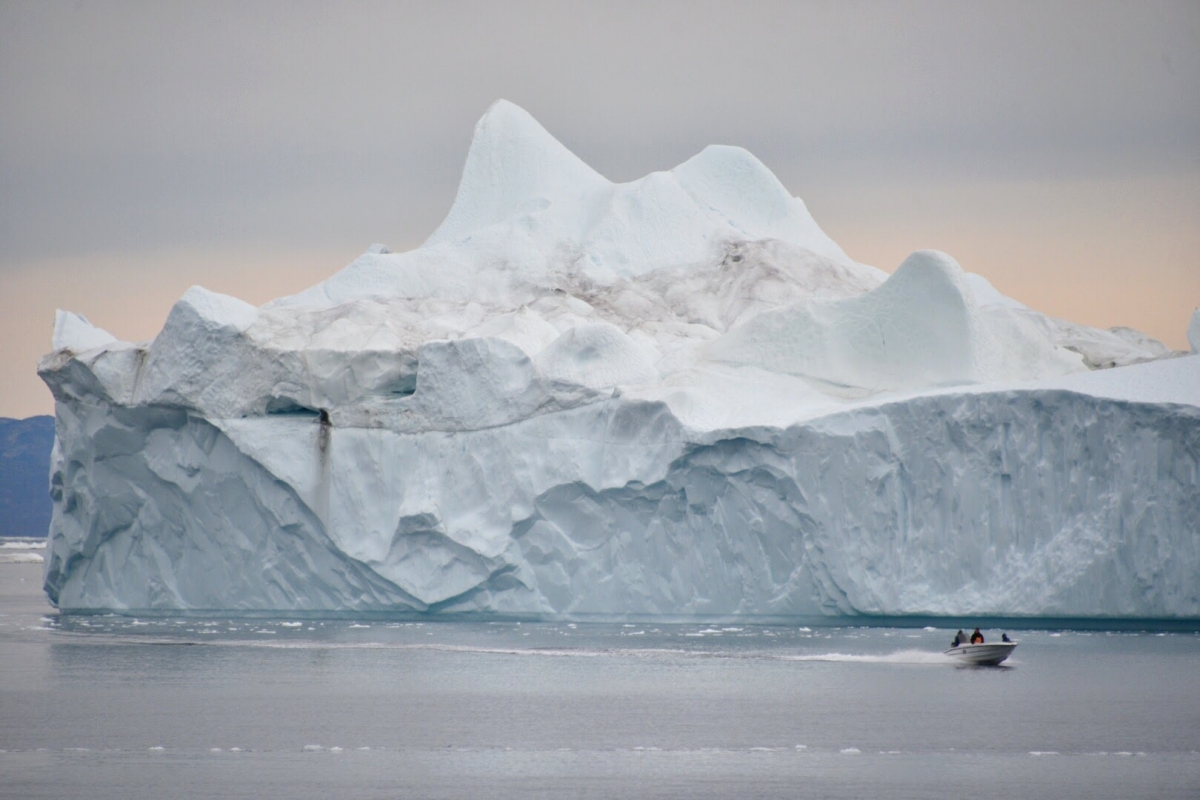
I fully understand people wanting to see the majesty of the polar regions while it is still there to see. I started visiting the Arctic in 1985, on a diving expedition under the polar ice cap and have taken visitors to Antarctica and Greenland more recently. Seeing the scale of these regions makes an impression that pictures and video cannot. However, increased shipping whether for tourism or commercial reasons must be done with safety as well as profit.
The burden of patrolling the region and being able to rescue people falls to the US Coast Guard and the seven other nations with jurisdiction in the Arctic Circle. They are fully aware of the looming problem of increased shipping in the region. Today the US Coast Guard posted a well done vblog about this issue and our recent fact-finding trip to Greenland. You can watch this two minute video here.
To be clear, I do not speak for the Coast Guard — for whom I have the greatest respect. From my perspective, however, only ships that are “ice strengthened” should be permitted while there is significant and increasing risk of icebergs. This applies to tourist and commercial vessels. The remoteness of the area makes it particularly difficult to render assistance in case of an emergency.
As my readers know I firmly believe we are entering a new climate era — one quite unlike anything in human history. The ocean temperature has already warmed about 1.5 degrees F (0.9 C). By the simplest physics of the melting temperature for ice and thermodynamics, it is hard to conceive of anything to change the forecast for more icebergs getting into the sea lanes.
Sure, we can learn from the geologic record and the last natural warming cycle one hundred twenty thousand years ago, but this time two things are different. Seven billion people and a highly complex vulnerable society are at risk. Plus, we have now broken out of the natural cycle, with a rate of warming that is hundreds of times faster than the usual rebound from the ‘ice ages’, making it very difficult to predict precisely how quickly Greenland and Antarctica will collapse. Regardless, the effects of that collapse will be more icebergs and rising sea level.
Tomorrow in Part 3 of this series I will look at the reasons Greenland has a somewhat different view of rising sea level and climate change: “What happens in Greenland doesn’t stay in Greenland.”
If you did not see Part 1 “Greenland is Getting Greener”, here is a link https://johnenglander.net/greenland-getting-greener-part-1
